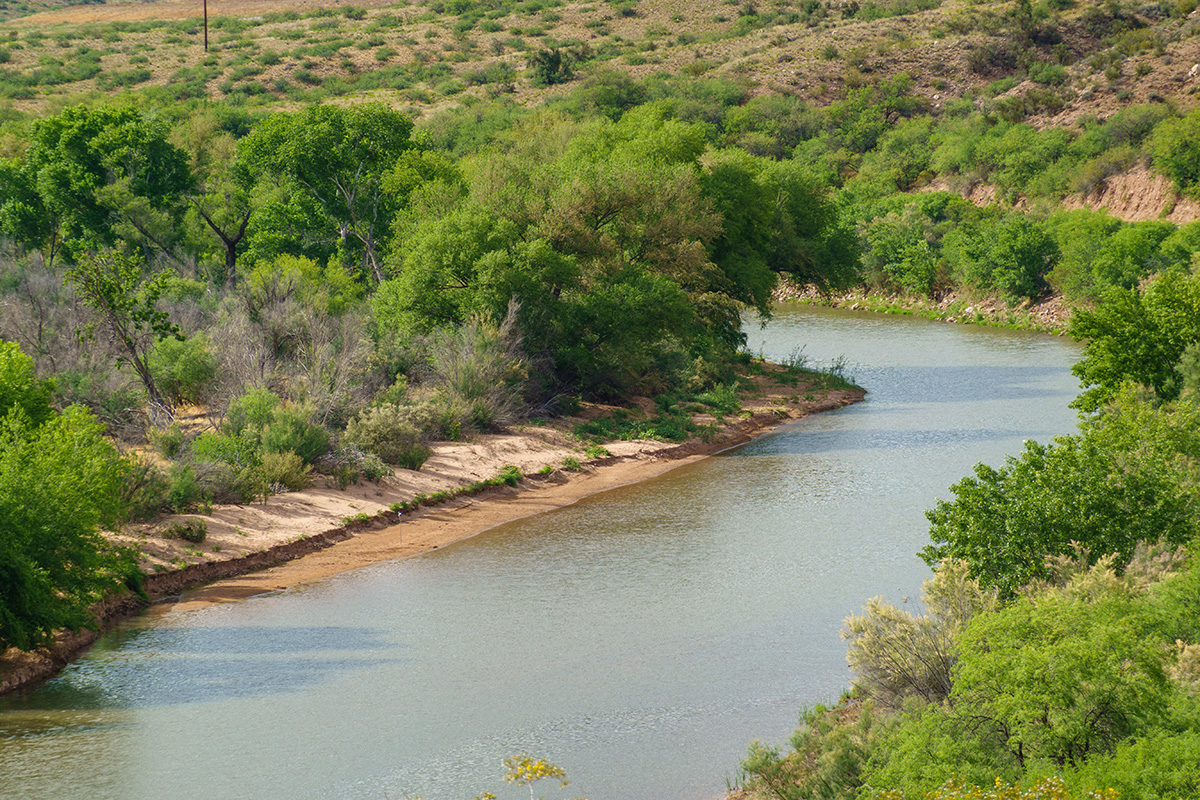
Friends of the Verde River, in conjunction with the River Otter Ecology Project and Fieldscope, hosted a river otter webinar on Thursday, May 18, to share tips for finding and reporting otter sightings around the Verde River. Through the Otter Spotter project, the three organizations are trying to interest residents in becoming community scientists and helping to document otter sightings for research and conservation purposes.
Megan Isadore, executive director of River Otter Ecology Project, presented an overview of otter ecology and biology. Although Arizona was formerly inhabited by a Sonoran subspecies of river otter, that subspecies was hunted to extinction for its fur during the 1880s. Otters from Louisiana were reintroduced to Arizona in the 1980s. They seem to be doing well, but there is a lack of data on their numbers and activity levels, which has prompted the community science effort.
Isadore has been collecting sightings in California since 2012, where otter populations dwindled due to traffic and loss of wetlands but later recovered on their own. The return of otters can signify a change in the state of the watershed, as otters are an indicator species.
Otters are born in the spring and have one to four pups, which are weaned and learned to swim between eight and 16 weeks. They are very curious and playful, one of the few species that continues to play throughout their lives, and can live around 10-12 years in the wild and up to 20 years in captivity.
Otters communicate with each other using a chirp-like contact call and a grunting noise called a chuckle. They can grow to 20 pounds and reach three to four feet long. They are largely carnivorous, preying on fish, birds and crustaceans, and need to eat about 17% of their body weight per day due to their high energy needs. Adaptations including nictitating membranes and sensitive whiskers enhance their ability to find prey underwater.
Tracking otters is difficult, as their tracks are often mistaken for raccoon tracks. While they use scent for information and leave scent secretions for other otters, this information is not accessible to humans. Other signs of otters can include latrine sites, areas that all otters use that are typically found on sandy banks, and otter beds, made of flattened vegetation with a narrow slide into the water.
Isadore pointed out that otters are very tough, resilient animals that can often survive in unusual areas. They are becoming an urban species and are getting used to people.
“River otters’ middle name is adaptability,” Isadore said, showing a map of otter sightings in industrial areas.
Otters are most often killed by cars, while their natural predators include wolves and mountain lions.
During the webinar, Dr. Jessica Bean explained how to use the Fieldscope app, which is a platform that collects participatory community science data and can provide analysis and visualizations. Logging an otter observation only requires a location, date and otter tailcount, but the app enables photos or videos to be uploaded as well.
This data will be used to build maps of otter behavior in the Verde River and to help advocate for better conservation decisions, such as keeping wildlife corridors open in new developments.